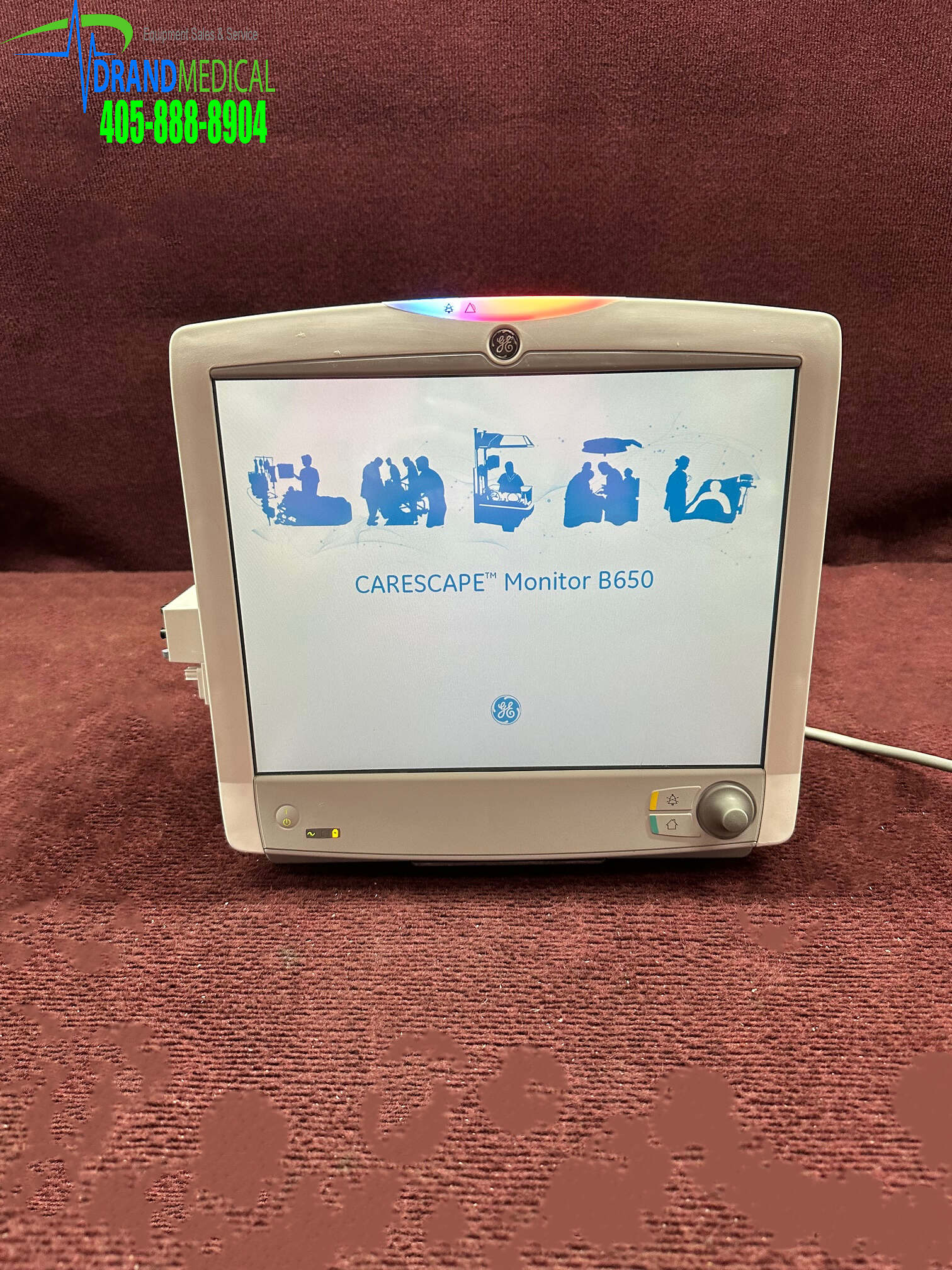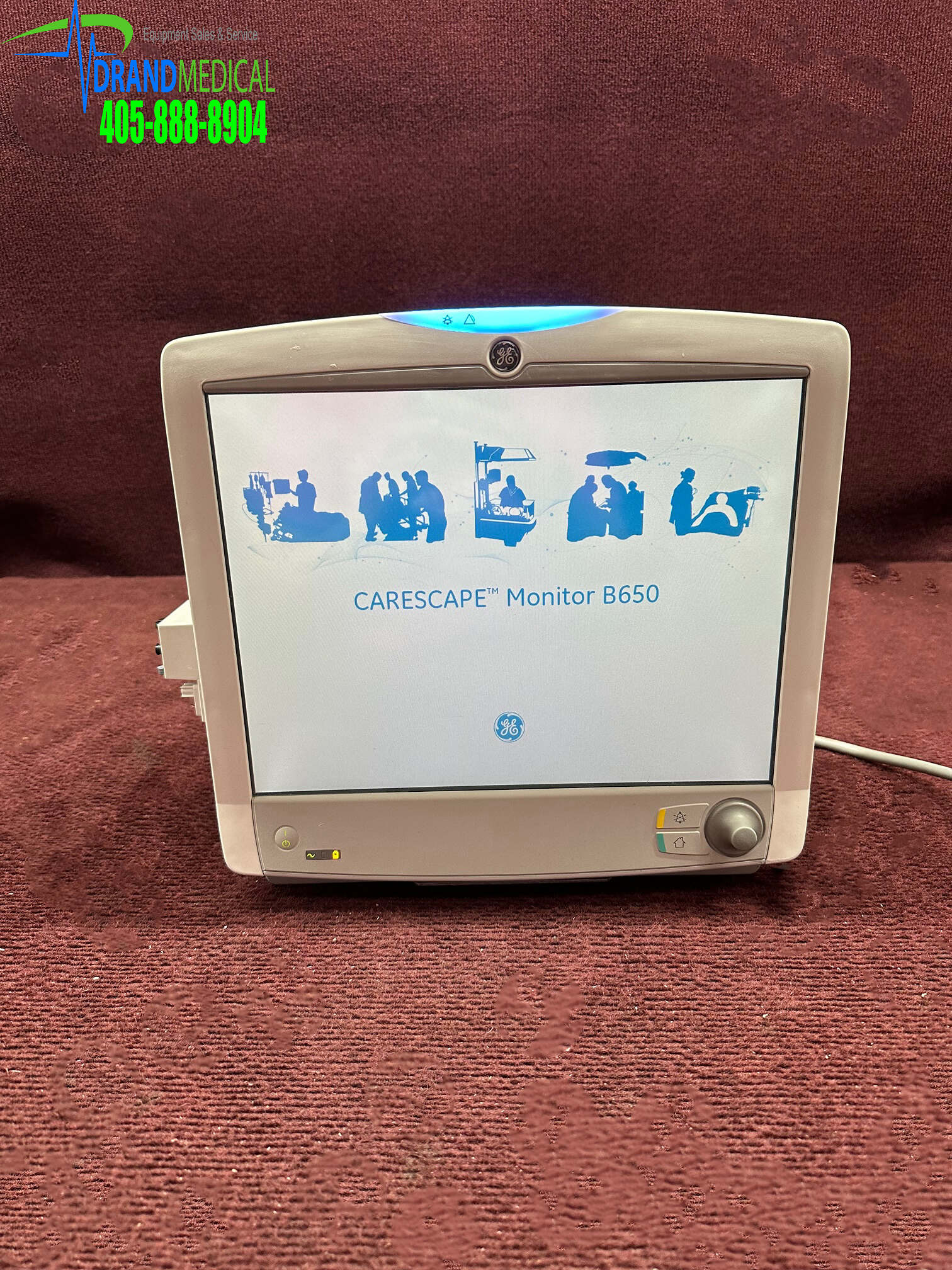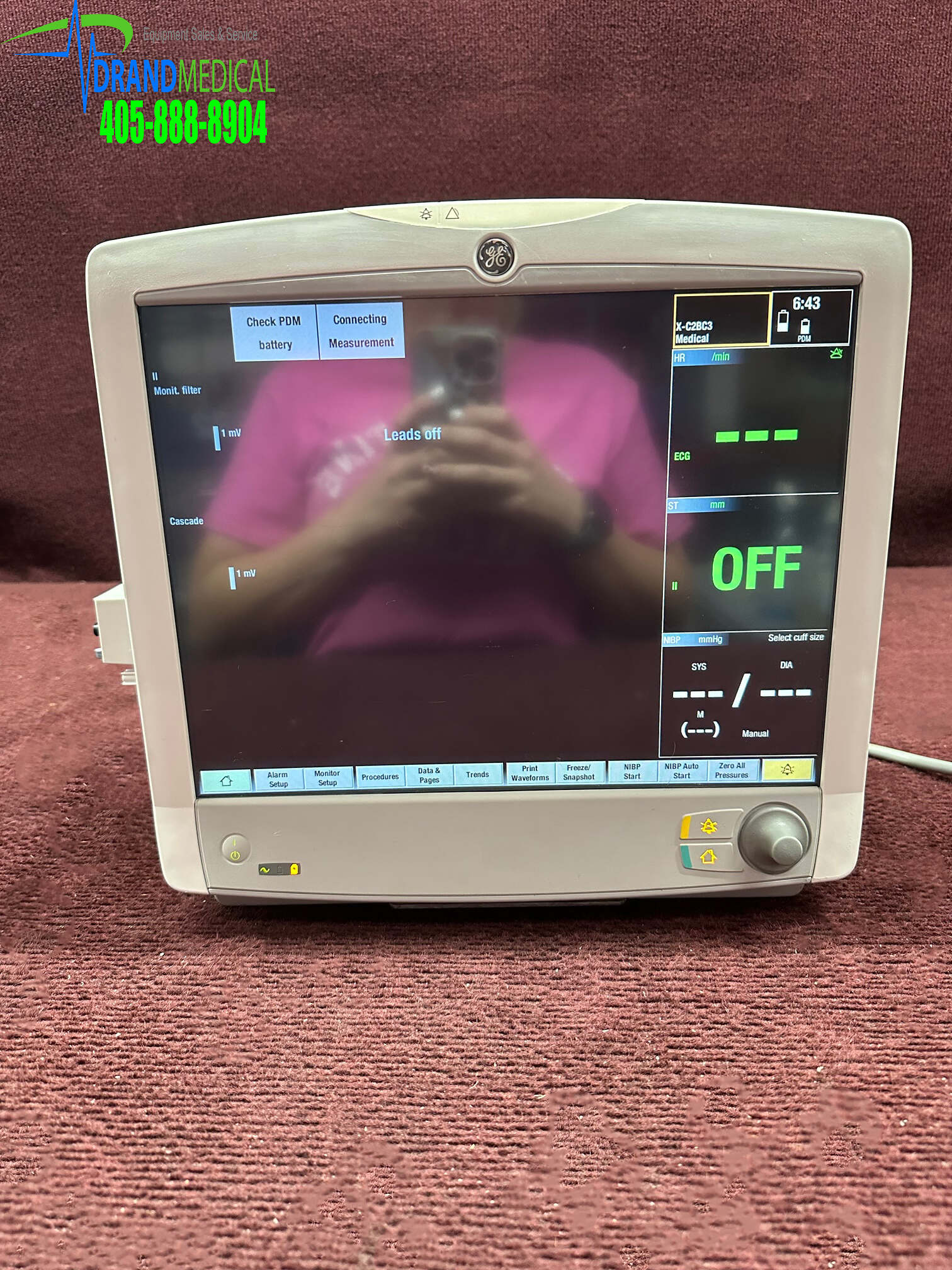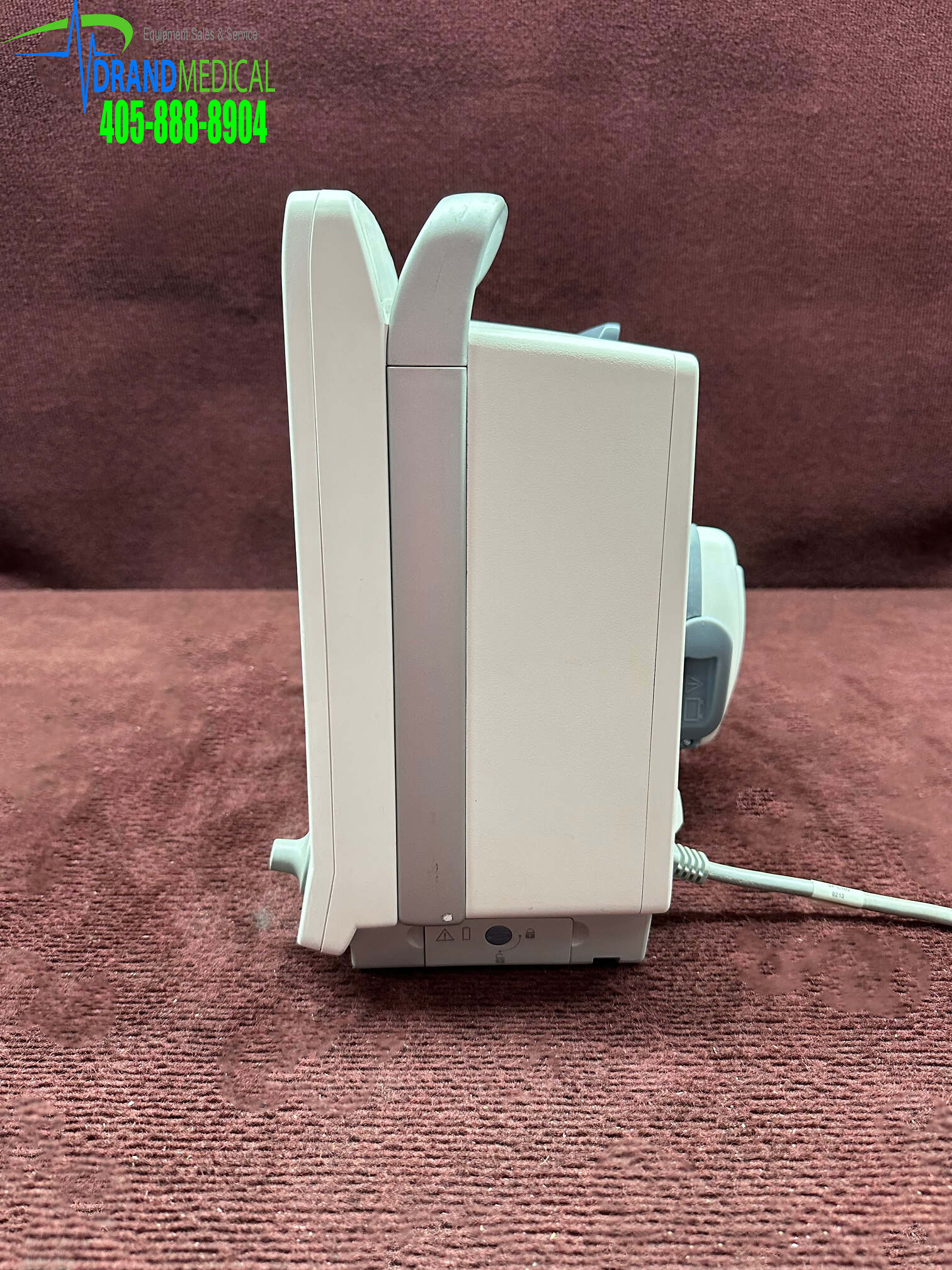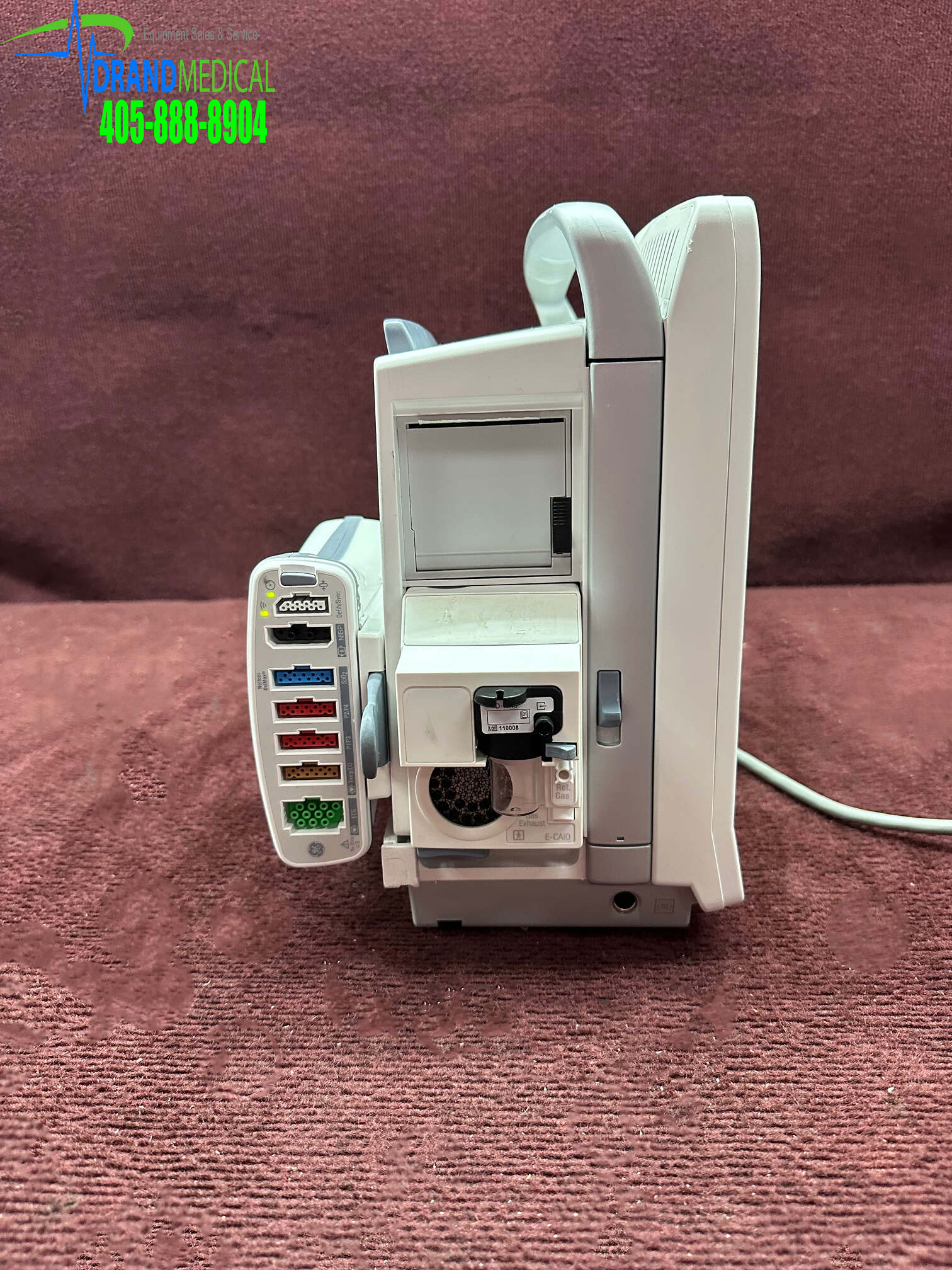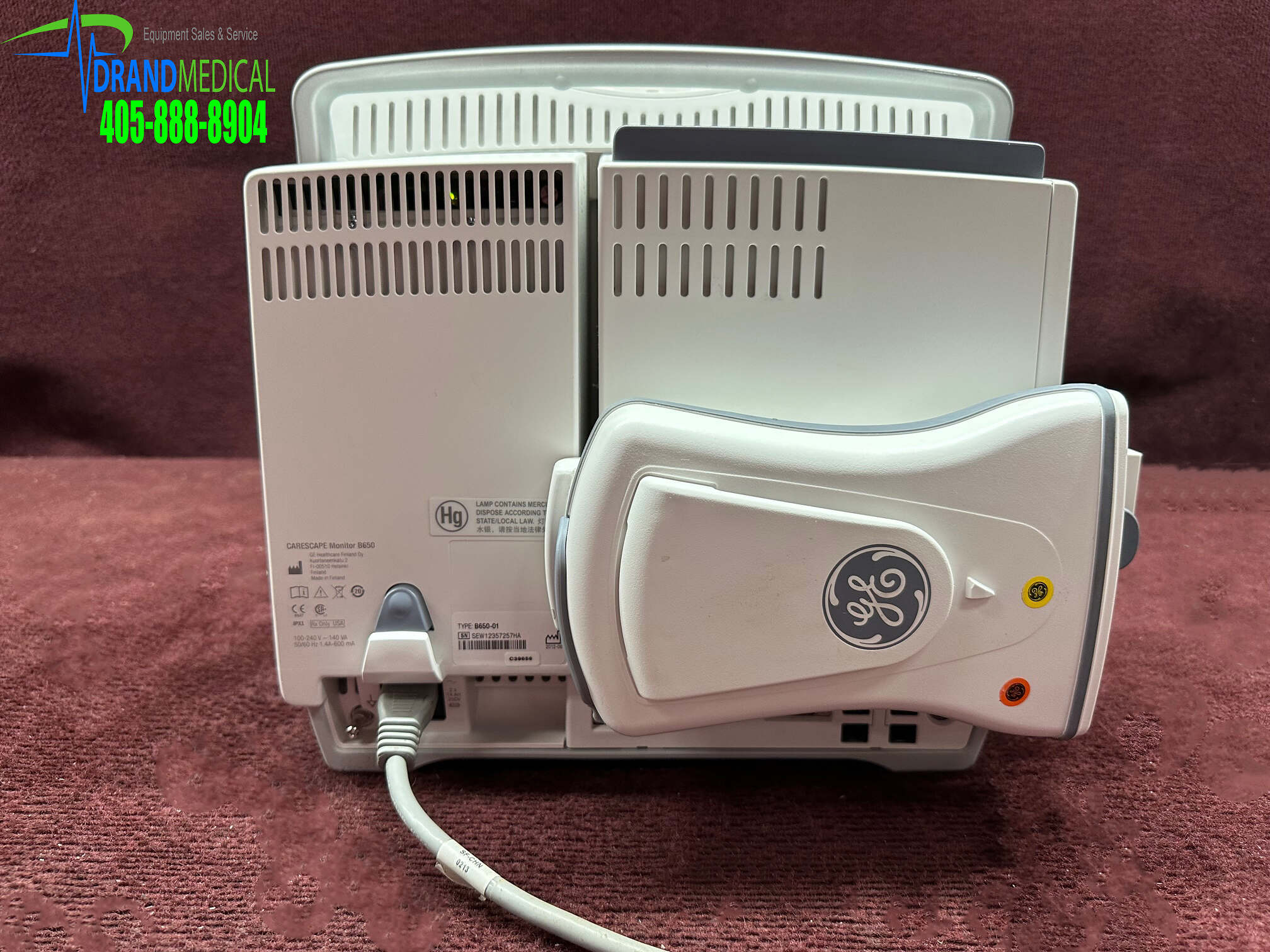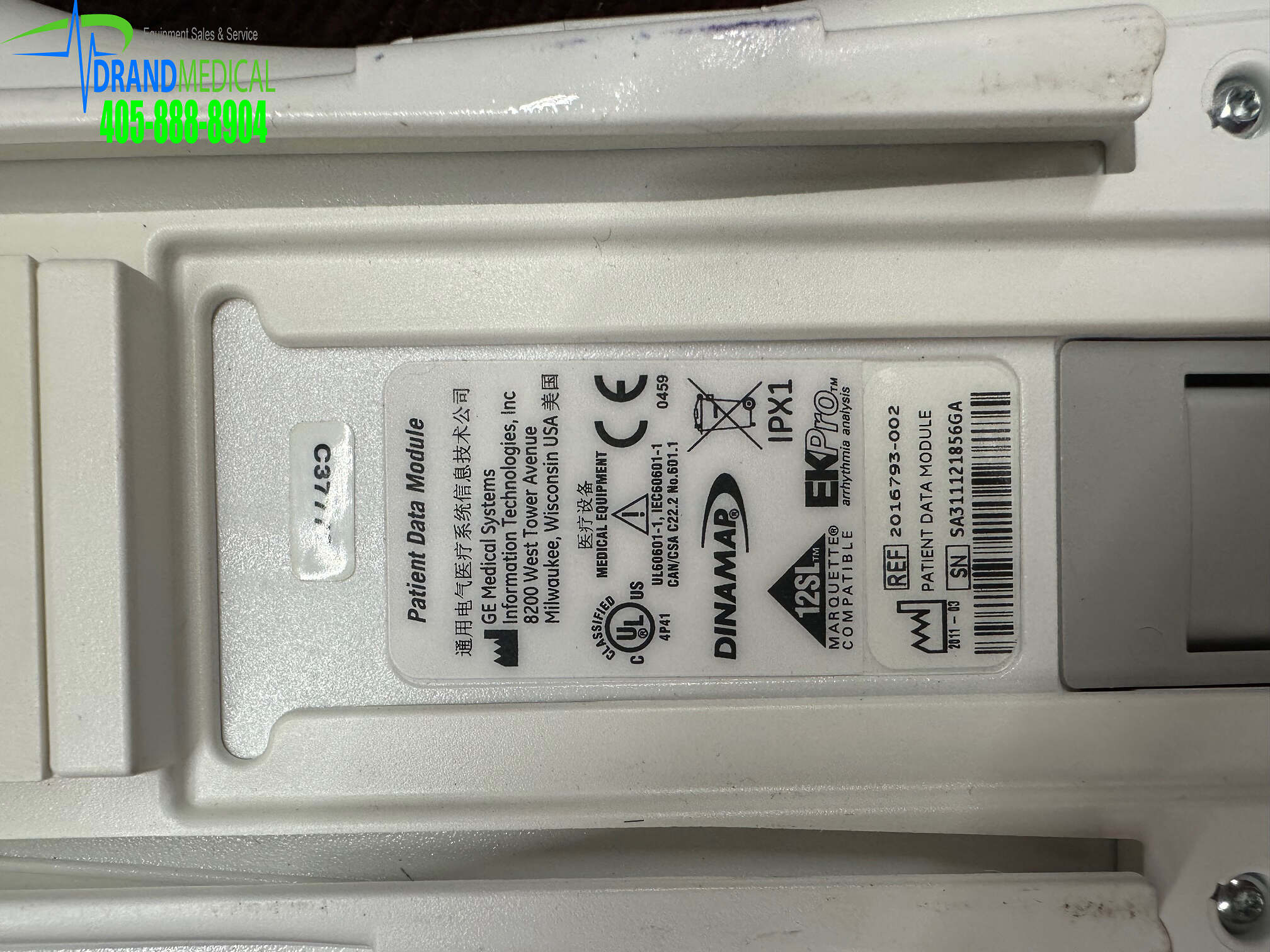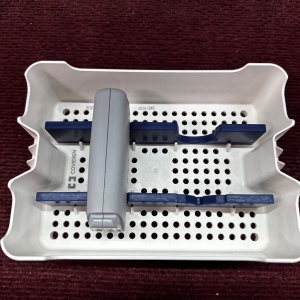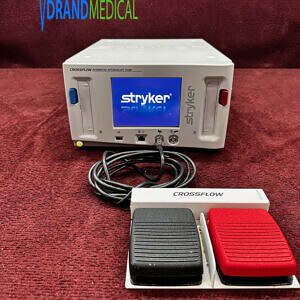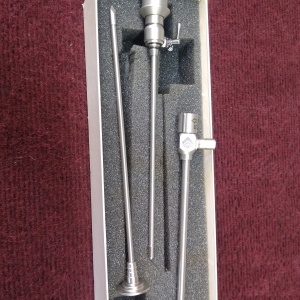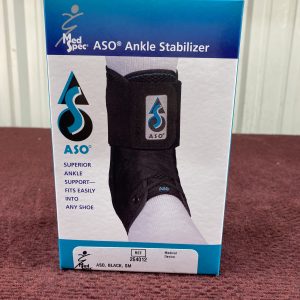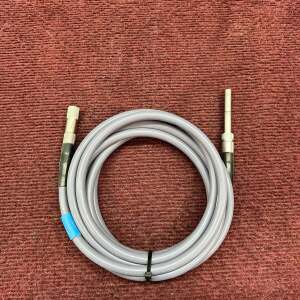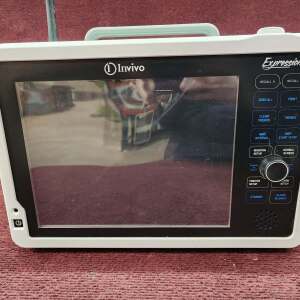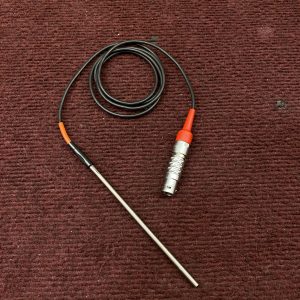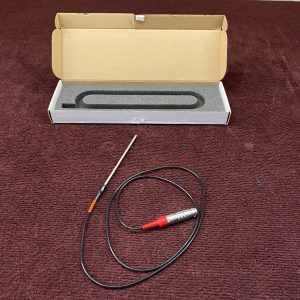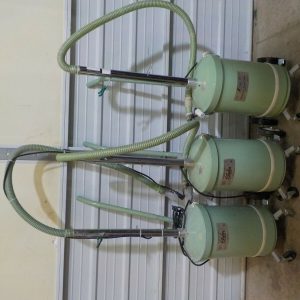Description
System introduction
The CARESCAPE Monitor B650 is a modular monitoring solution for multiple care areas and intrahospital transport within a professional healthcare facility. The patient monitor offers various hardware configurations, software options and parameter module support to expand from basic hemodynamic operations to demanding operating room applications. The patient monitor is backwards compatible and upgradeable for the future.
3.2 System components
The CARESCAPE Monitor B650 monitoring system components are introduced below.
3.2.1 Monitor
The CARESCAPE Monitor B650 consists of a main unit and a pivoting module frame.
Main unit
The main unit consists of the following subsystems: power management, CPU, display, user interface and external interfaces.
The power management subsystem provides the operating voltages for the electronics of the device and takes care of the battery management. It consists of an AC/DC power supply, a DC/DC power management board and an optional lithium-ion battery.
The CPU board is the main board of the monitor. It takes care of the user input and acquisition data processing and displays the processed information on the screen. It controls the monitor operation and communication with the other subsystems. It also interfaces with the synchronization connector, the optional WLAN card and the speaker. The main software and all platform and clinical settings are stored in a detachable flash memory.
The display subsystem consists of a 15″ touchscreen LCD display that has an integrated LED backlight unit. The display controller is integrated to the CPU board.
The user interface board provides an interface between the CPU board and the keypad, Trim Knob control, alarm light board and touchscreen sensor.
There are two different configurations of the interface board. They provide connectors for peripheral devices like USB input devices, network interfaces, a secondary clone display and other devices.
Module frame
The monitor has a pivoting module frame that includes standard docking for the following multiparameter hemodynamic modules: Patient Data Module (PDM) and Patient Side Module (PSM).
The optional E-module support extends the monitoring capabilities to other hemodynamic modules, gas measurement, brain monitoring and relaxation measurement. The optional integrated recorder enables local printing to a thermal paper. Both options also are available as field upgrades.
3.2.2 Software
The patient monitor is highly configurable and provides many monitoring possibilities with a flexible software licensing model.
The monitor supports care area specific software packages for OR, PACU, ICU, ED and NICU. Each dedicated software package provides a comprehensive feature set for the different monitoring needs and can be further extended with the optional feature licenses. Software license model supports trial licensing and easy field upgrades with license key activation.
3.2.3 Input devices
You can connect several USB input devices to the patient monitor, including alphanumeric keyboard, mouse, remote control and barcode reader.
Refer to the patient monitor’s supplemental information manual for a list of compatible USB input devices.
3.2.4 Acquisition modules
The patient monitor includes standard docking for the following multiparameter hemodynamic modules: PSM and PDM.
3.5 Product security
The patient monitoring software incorporates an assortment of security features designed to allow a flexible approach to safe and secure implementation, focusing on the principles of confidentiality, integrity, and availability. These features assist you in using the system in a manner that protects patient privacy and security in your setting, and also addresses expectations for the environment where the system will be used.
3.5.1 Security features
Access control
Access control is the overall mechanism used to determine and enforce the following:
•Who has access
•How individuals gain access
•When access is permitted
•What information may be accessed
Other than clinical and Webmin applications, access to other subsystems (for example BIOS) is restricted. The clinical and Webmin application interfaces have a role-based access control (for example, biomed and clinical). A user may log into these interfaces (for example, Webmin) to perform operations that are limited to the generic user. See the user and technical manuals for detailed information on available features.
